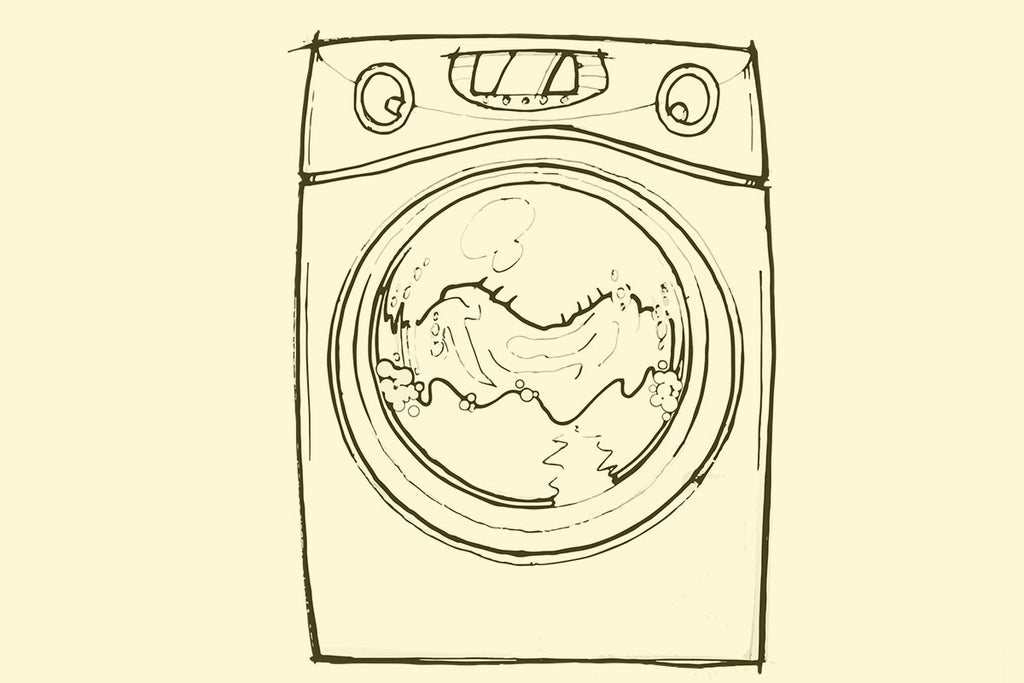Rain resistant jackets and high performance materials help defend against the elements. When the weather gets wet or cold or mostly probably both, the technical fabrics of modern cycling are there to keep you snug and not dripping in your own sweat.

Performance fabrics made by Schoeller or Polartec with softshell properties, or Gore-Tex, require extra care so that they last longer and retain their breathability and waterproof characteristics. Standard laundry detergents are quite harsh, and often contain surfactants, optical brighteners, perfumes, and various other additives. Each of these will become embedded in the pours and weave of the fabric with every wash cycle. Usually, this wouldn't cause a problem, but in technical, waterproof clothing, the additives act as wetting agents, masking the waterproof treatment or blocking the fabrics pours, reducing the breathability and its ability to wick sweat and dry quickly.
How to re-proof your softshell or waterproof jacket, gloves and Gore-Tex clothing

All waterproof items, including Gore-Tex jackets, rely on a Durable Water Repellent finish in order to keep you dry. These treatments also keep the surface fabric of your garment dry, maintaining the breathability of the fabric. Over time, however, these DWR treatments will wear off and become less effective. When this happens, they need reapplying.
1. Once you start to notice that you don't get the same level of beading on the jacket as you did previously, it's time to give your garment a thorough clean, and a fresh DWR treatment.
2. Firstly clean the fabric to get ride of odours, mud and dirt. You can clean the fabric by hand in warm water, with performance wash or delicate non-biological soap.
Or use a 2-in-1 wash and re-proofer from Endura, which combines both steps and is ideal for items such as shoe covers and gloves that don't get washed as frequently. Ensure you clean your washing machine soap tray so that old detergent doesn't get added to the wash.
If you are using a 2-in-1, jump to step 4.
3. After cleaning, apply the re-proofer. This can be done adding a re-proofer in a washing machine cycle (assuming your product can go in the washing machine) or with a re-proofer spray. Also choose the spray if you only need to re-proof key areas of a garment or you have only one item to re-proof.
Apply the spray to clean and damp garments.
4. DWR treatments are heat activated. In short the heat will allow the DWR coated micro fibres to stand up on end, allowing water to repel better. There are several way to activate it:
- Put the garment in the tumble dryer on a low heat for 15 minutes;
- Leave the item on a warm radiator;
- Iron on a low heat with a piece of material between the iron;
- Use a hair dryer to gently dry the item.
Tips for washing and re-proofing performance cycle clothing
- Only re-proof if your item has been cleaned first.
- Clean your washing machine soap tray so that old detergent doesn't get added to the wash.
- Close up all zips to stop them snagging in the machine.
- Never use biological powder or fabric softeners.
- Put your Lycra in a mesh bag to keep it away from Velcro.
- Use 20ml more cleaner/wash if you live in a hard water area.
- Never wash above 40 degrees.
- Regular re-proofing helps the garment last longer. Washing an item after two years of abuse may not restore it to its former glory.
- If clothing wasn't waterproof to begin with using a re-proofer won't make it as good as your favourite softshell. Re-proofer may delay the onset of water.
How to wash merino clothing
Merino is something of a wonder fabric. It’s excellent at wicking away sweat and moisture, and it keeps you warm without being excessively heavy. Like most wool, merino also possesses a natural water-repellency, and it boasts mild antibacterial properties. Added together, it’s really no wonder that merino is a popular choice for jerseys, base layers and socks favoured by cyclists the world over.
Standard washing powders have additives which, over time, will strip merino of its brilliant properties and cause the item to lose its shape.
- Use a formulated wool / merino wash. Choose a wash with cedar extract - a natural moth repellent.
- Wash on a low heat, never more than 40 degrees.
- Wash inside out, to avoid bobbling.
- Never use a bleach or soap that contains chlorine which can destroy the merino fibres.
- Don’t wring out the garment as this will stretch the wool.